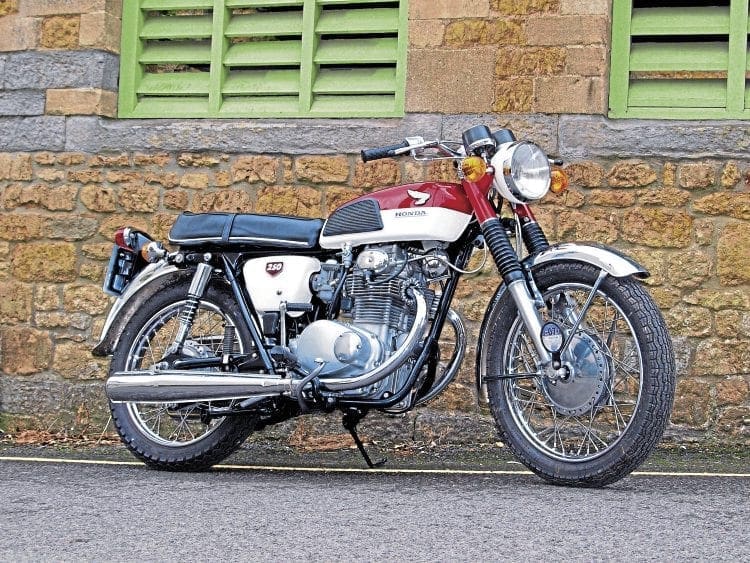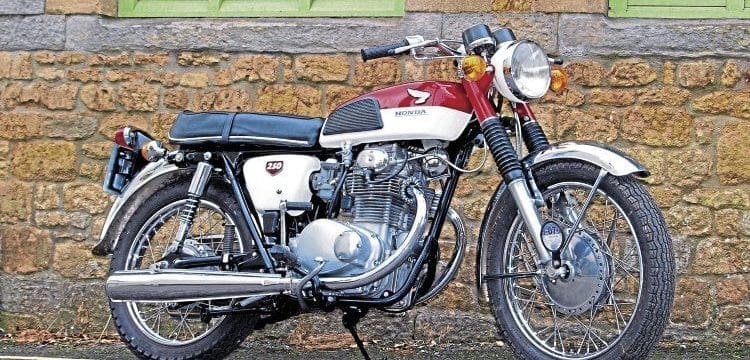Solid, reliable and supremely efficient – Steve Cooper reflects on how the K series Honda CB250/350 twins were so important for Honda in 1968
Not every anniversary is, by default, a momentous one.
Some can see little or no worth in celebrating anything less than another ‘fastest bike on the planet’ moment.
If that’s your own particular view of the world then this month’s subject will possibly bore you stupid, yet it’s as valid as any we’ve covered to date, or will in the future. Honda’s CB250 and 350 K series twins may not set the world of two-wheeled classics alight now, yet without them many of us may never have progressed beyond mopeds!
Enjoy more Old Bike Mart reading in the monthly newspaper.
Click here to subscribe & save.
In the UK especially, the 250 was a natural and obvious choice for many who innately distrusted two-strokes.
The 250 K series was also perennially the ‘safe’ choice for parents who didn’t want young Nigel becoming a two-wheeled loon… and when Dad was acting as guarantor on the Hire Purchase papers he often had the final say.
If the 350 was apparently something of an afterthought here in Blighty, it was the total opposite in the all-important American market.

There the 350 capacity was seen as a do-it-all machine; small and light enough to ride across town yet with enough poke to ride out of the local county and even into the next state.
If that seems hard to believe, know this; the American market 350 sector was so key to sales that Triumph persuaded the mercurial Edward Turner out of retirement to design them a viable 350. Perhaps the Bandit/Fury was too little too late, but it showed just how crucial the 350 class was to any motorcycle manufacturer.
Step aside CB72/77
The CB250/350 K models appeared in 1968 to replace the hugely successful CB72/77 models that had been in existence since 1960.
Those early twins had been pivotal to Honda’s ongoing success. They’d swept every other four-stroke of similar capacity before them and had also shown how quirky the previous C series twins had been.
The CB72/77 may have been unquestionably successful but they were also costly to produce. Even if they were designed to be built on a mass production scale previously never dreamed of, they weren’t the easiest machine to put together.
In particular the top end was time-consuming to build up and install. Honda doubtless made a profit on each 72/77 but not at the levels they might have wished for. When Soichiro Honda had got his fledgling company off the ground almost two decades earlier he’d swiftly realised he needed a ‘money man’, yet someone way beyond a conventional accountant.
He needed a man who shared his vision – and found exactly the right person in Takeo Fujisawa.
As well as negotiating with banks, arranging the financials for Honda’s overseas distribution centres and carrying out long-term financial planning, Fujisawa had input into design and shop floor costs.
The outgoing CB72/77 may well have been robust designs beloved by a legion of loyal customers but they weren’t generating the levels of revenue necessary for sustained growth.
Read more and view more images in the November 2018 issue of OBM – on sale now!
Advert
 Enjoy more Old Bike Mart reading in the monthly paper. Click here to subscribe.
Enjoy more Old Bike Mart reading in the monthly paper. Click here to subscribe.


